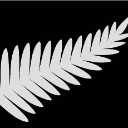- Home
- /
- Programming
- /
- Programming
- /
- SAS date parameters
- RSS Feed
- Mark Topic as New
- Mark Topic as Read
- Float this Topic for Current User
- Bookmark
- Subscribe
- Mute
- Printer Friendly Page
- Mark as New
- Bookmark
- Subscribe
- Mute
- RSS Feed
- Permalink
- Report Inappropriate Content
Hello
I am trying to create sas dates parameters.
I see that the reqeusted parameters were not created.
Does anyone know why??
%let Vector1=1806+1805+1803+1712;
%let mon_now=%scan(&Vector1.,1,+);
%let mon_kdm=%scan(&Vector1.,2,+);
%let qua_kdm=%scan(&Vector1.,3,+);
%let last_dec=%scan(&Vector1.,4,+);
%put &mon_now.;
%put &mon_kdm.;
%put &qua_kdm.;
%put &last_dec.;
data out;
length mon_now_Minus12E_char mon_kdm_Minus12E_char qua_kdm_Minus12E_char last_dec_Minus12E_char $15.;
format mon_now_Minus12E_SAS_D mon_kdm_Minus12E_SAS_D qua_kdm_Minus12E_SAS_D last_dec_Minus12E_SAS_D date9.;
mon_now_Minus12E_SAS_D = intnx('month',input("&mon_now",yymmn4.),-12,'end');
mon_kdm_Minus12E_SAS_D = intnx('month',input("&mon_kdm",yymmn4.),-12,'end');
qua_kdm_Minus12E_SAS_D = intnx('month',input("&qua_kdm",yymmn4.),-12,'end');
last_dec_Minus12E_SAS_D =intnx('month',input("&last_dec",yymmn4.),-12,'end');
mon_now_Minus12E_char = cats(put(mon_now_Minus12E_SAS_D,date9.),"'d");
mon_kdm_Minus12E_char = cats(put(mon_kdm_Minus12E_SAS_D,date9.),"'d");
qua_kdm_Minus12E_char = cats(put(qua_kdm_Minus12E_SAS_D,date9.),"'d");
last_dec_Minus12E_char =cats(put(last_dec_Minus12E_SAS_D,date9.),"'d");
CALL SYMPUT('mon_now_Minus12E',mon_now_Minus12E_char);
CALL SYMPUT('mon_kdm_Minus12E',mon_kdm_Minus12E_char);
CALL SYMPUT('qua_kdm_Minus12E',qua_kdm_Minus12E_char);
CALL SYMPUT('last_dec_Minus12E',last_dec_Minus12E_char);
run;
%put &mon_now_Minus12E.; /* I don't get it here!!!*/
%put &mon_kdm_Minus12E.; /* I don't get it here!!!*/
%put &qua_kdm_Minus12E.; /* I don't get it here!!!*/
%put &last_dec_Minus12E.; /* I don't get it here!!!*/Accepted Solutions
- Mark as New
- Bookmark
- Subscribe
- Mute
- RSS Feed
- Permalink
- Report Inappropriate Content
You have imbalanced quotes.
Is that on purpose?
If so be careful when you use the macro variables.
This works:
%put %superq(mon_now_Minus12E );
%put %superq(mon_kdm_Minus12E );
%put %superq(qua_kdm_Minus12E );
%put %superq(last_dec_Minus12E);
30JUN2017'd
31MAY2017'd
31MAR2017'd
31DEC2016'd
- Mark as New
- Bookmark
- Subscribe
- Mute
- RSS Feed
- Permalink
- Report Inappropriate Content
You have imbalanced quotes.
Is that on purpose?
If so be careful when you use the macro variables.
This works:
%put %superq(mon_now_Minus12E );
%put %superq(mon_kdm_Minus12E );
%put %superq(qua_kdm_Minus12E );
%put %superq(last_dec_Minus12E);
30JUN2017'd
31MAY2017'd
31MAR2017'd
31DEC2016'd
- Mark as New
- Bookmark
- Subscribe
- Mute
- RSS Feed
- Permalink
- Report Inappropriate Content
Ronein,
You under-parameterize; and as a result, end up with rather unwieldy code burdened with excessive hard coding. Instead, you'd be better off storing things you're likely to change in the future in parameters and then let SAS do its job. An extra benefit is that you'd end up with much cleaner and comprehensible code:
%let V = 1806+1805+1803+1712 ; * yymm date list ;
%let M = 12 ; * -number months ;
%let P = mon_now mon_kdm qua_kdm last_dec ; * mvar prefixes ;
%let S = Minus&M.E ; * mvar suffix ;
%let F = date9. ; * mvar format ;
data _null_ ;
do j = 1 to countw ("&V", "+") ;
mm = intnx ("mon", input (scan ("&V", j, "+"), yymmn4.), -&M, "E") ;
q9 = cats ("'", put (mm, &F), "'d") ;
mv = catx ("_", scan ("&P", j), "&S") ;
call symputx (mv, q9) ;
end ;
run ;
%put _user_ ; To realize the advantage of this approach, imagine that you had a list of 20 YYMM encoded dates and 20 corresponding names for the macro variables to populate (instead of just 4). In this case, you'd have to add 80 lines to your existing code, while the program above wouldn't swell by a single line.
Paul D.
April 27 – 30 | Gaylord Texan | Grapevine, Texas
Registration is open
Walk in ready to learn. Walk out ready to deliver. This is the data and AI conference you can't afford to miss.
Register now and lock in 2025 pricing—just $495!
Learn how use the CAT functions in SAS to join values from multiple variables into a single value.
Find more tutorials on the SAS Users YouTube channel.
SAS Training: Just a Click Away
Ready to level-up your skills? Choose your own adventure.



